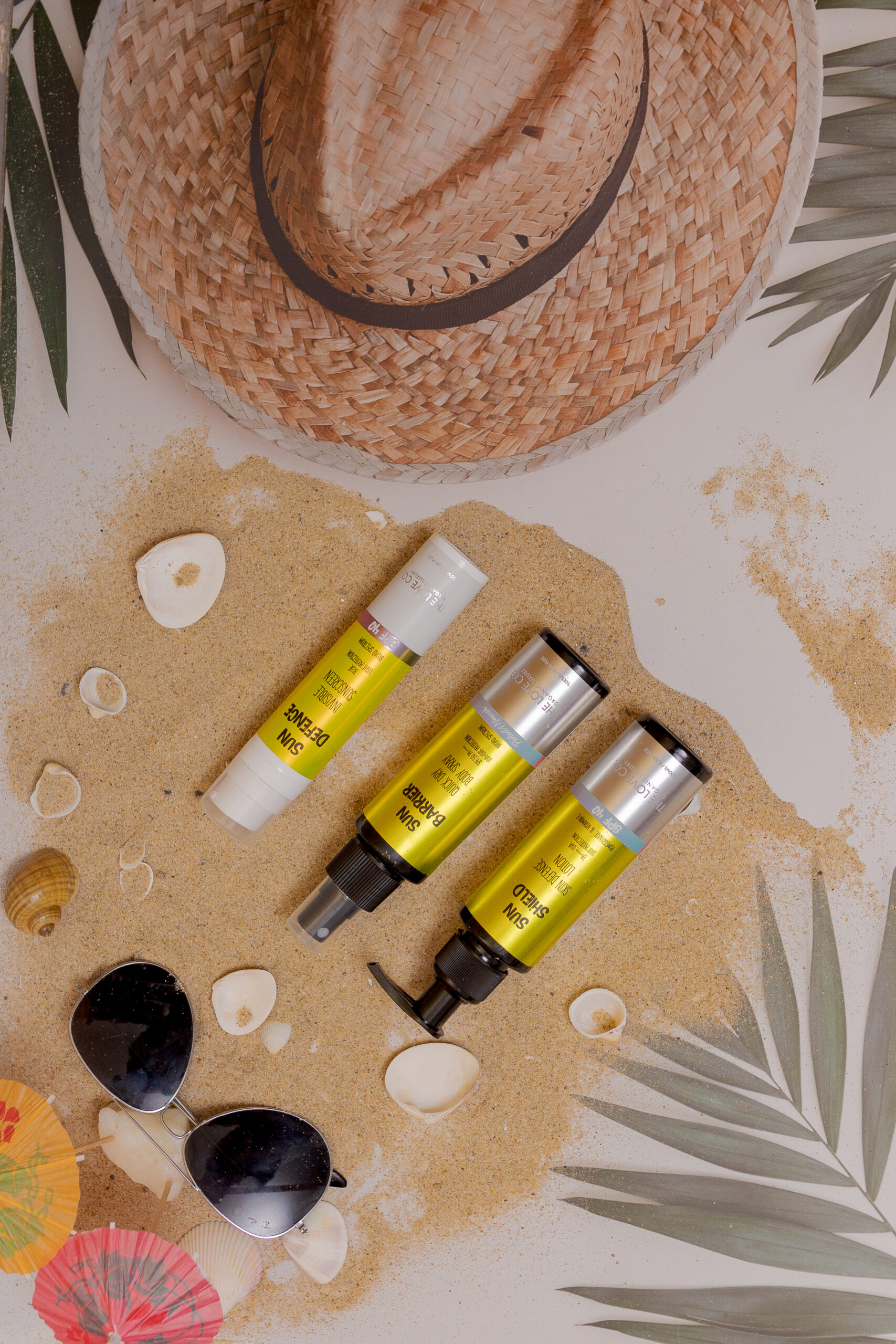


“Nothing is more important than applying sunscreen” and we can’t emphasize it enough!
Sunscreens are a holy grail product and are an essential part of skincare and self-care. They not only protect you from the sun’s UV rays and prevent damage to your skin cells, but also slow the process of premature aging of skin and sunburns. The benefits of applying sunscreens are endless and we spoke to Mr. Hemang Jain, a skincare craft enthusiast, founder of The Love Co., and a professional with over 15 years of experience in the Education, Cosmetics, and Personal Care Industries to dissect it for you!
Read on to know as Mr. Hemang Jain shares the As to Zs of sunscreens, its benefits, types, and the right way of application!
Q. Why is it so important to apply sunscreen?
A. Sunscreen isn’t just a cosmetic addition; it’s a vital shield against the sun’s potent UV radiation. UV rays can cause DNA damage in skin cells, leading to sunburn, premature aging, and an elevated risk of skin cancer. By forming a protective barrier, sunscreen prevents these harmful rays from penetrating the skin. Its benefits go beyond preventing sunburn – it preserves skin’s youthfulness, reduces the risk of skin malignancies, and aids in preventing uneven pigmentation.
Q. What are the different types of sunscreens available in the market?
A. Sunscreens fall into two categories: chemical and physical (mineral). Chemical sunscreens work by absorbing UV rays and converting them into harmless heat. On the other hand, physical sunscreens sit atop the skin, deflecting and scattering UV rays away. The uniqueness lies in their mechanisms and ingredient compositions. Physical sunscreens, with minerals like zinc oxide and titanium dioxide, tend to be gentler for sensitive skin. Additionally, innovative formulations may offer specialized attributes such as water resistance or suitability for active lifestyles. A lot of sprays are also coming on the market. You can use the Sun Barrier Quick Dry Spray which will dry quickly on the skin and will be super light-weight to use.
Q. How does one choose the best or ideal sunscreen for themselves?
A. The best sunscreen choice is a personalized one. It depends on factors such as your skin’s response to sun exposure, planned activities, and your skin’s inherent resilience. While higher SPF values offer increased UVB protection, remember that no sunscreen provides complete immunity. A Sun Defense Sunscreen with SPF 40 will protect you from the sun while giving broad spectrum coverage while being water and sweat-resistant. Regular reapplication, especially after sweating, swimming, or extended sun exposure, is paramount for sustained protection.
Additionally, look for “broad-spectrum” on the label, indicating protection against both UVA and UVB rays. Opt for a formula tailored to your skin type and concerns – hydrating for dry skin, oil-free for oily skin, etc. Ingredients like zinc oxide and titanium dioxide are excellent for physical protection, reflecting and scattering UV rays. For chemical protection, consider avobenzone and octocrylene. Furthermore, a touch of antioxidants can boost the sunscreen’s defense against free radicals induced by UV exposure.
Q. What is the best way of applying sunscreens?
A. The art of applying sunscreen is in its thoroughness. For the face, it’s a step after moisturizing and before makeup. An ample, even application is crucial – think of it as a protective canvas. On the body, be comprehensive, covering often-forgotten areas like the back of your neck and the tops of your feet. Apply 20-25 minutes before sun exposure to allow proper absorption. Reapplication every two hours, and immediately after swimming or sweating, ensures uninterrupted protection, Sunscreen body spray is a perfect go-to sunscreen for reapplication.
Q. How are face sunscreens different from body sunscreens?
A. Face sunscreens are carefully crafted to cater to facial skin’s distinct sensitivity and structure. It has a lighter texture and is designed to integrate seamlessly into skincare and makeup routines. In contrast, body sunscreens, with potentially thicker consistency, are engineered for broader applications. We have also tailored ingredients like hyaluronic acid & niacinamide in face sunscreen to address specific skin needs while safeguarding from UV rays. As a skin crafter, my goal is to offer a variety of sunscreens for the face as well as the body.
Q. What are the potential cons of not using sunscreen?
A. Neglecting sunscreen is equal to leaving your skin vulnerable to an array of harm. Sunburn is the most apparent consequence, but long-term effects like premature aging, marked by wrinkles, fine lines, and age spots, are equally concerning. The risks don’t stop there – unprotected UV exposure can lead to DNA mutations, heightening the risk of skin cancers including aggressive melanoma. Furthermore, without proper protection, the skin’s barrier function weakens, leading to dryness, sensitivity, and exacerbation of existing skin conditions.